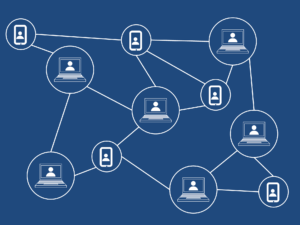A Consensus Protocol is Blockchain’s Integrity Mechanism
A blockchain consensus protocol is a mechanism used to enforce the integrity of the Blockchain by verifying that there is only one, true version of the Blockchain and by preventing bad actors from sending or validating fraudulent information. When a consensus is reached, the agreement on the current state of the Blockchain allows the next block to be created.Creating a blockchain consensus protocol that is both decentralized and scalable is the biggest problem facing today’s Blockchain developers. Decentralization is also associated with network integrity because requiring every node in the system to have the same version of the Blockchain significantly decreases the chance of bad actors and manipulation. Yet, as a decentralized network grows, it becomes increasingly more difficult to make sure that only one, true version of the Blockchain exists.In order to understand the current limitations of decentralization, we will examine the Proof of Work protocol and compare it to the Proof of Involvement and Integrity protocol. What is Proof of Work – PoW?This was the first consensus protocol developed and is used to validate Bitcoin transactions. PoW occurs when miners compete to be the first to verify the transaction by referring to previous transactions. In other words, miners are following the money to its original source – when it was first introduced into the Blockchain – in order to prove ownership. When the history is validated, a new block is created and the winning miner is rewarded with a portion of a Bitcoin. Miners who falsely validate transactions are banned from validating any further transaction; thus, there is a financial incentive to accurately verify transactions.The major problem with PoW is that it is inefficient and lacks scalability. In practice, there are hundreds of miners all working to solve a single puzzle. This requires an enormous amount of computing power. In the end, only one miner is rewarded. Additionally, PoW is limited to about 7 transactions per second. Considering that VISA processes more than 1,667 transactions per second, PoW cannot be effectively used on a large scale.What is Proof of Involvement and Integrity – PII?This consensus protocol, being developed by NeuroChain, present a solution to the scalability problem while also ensuring the security of a distributed, decentralized system. It is important to note that in PII, nodes are replaced by bots. A validator is elected to based on its involvement in the system and its integrity score. Involvement refers to the bot’s entropy – how the bot is considered in the network and the value of transactions it has made. Its integrity score is based on the bot’s reputation, its value creation, and its transparency. Additionally, the PII consensus protocol is capable of processing hundreds of thousands of transactions per second, making it scalable and able to be used globally.For more in-depth information on how PII works, check out NeuroChain’s technical whitepaper.
What is Proof of Work – PoW?This was the first consensus protocol developed and is used to validate Bitcoin transactions. PoW occurs when miners compete to be the first to verify the transaction by referring to previous transactions. In other words, miners are following the money to its original source – when it was first introduced into the Blockchain – in order to prove ownership. When the history is validated, a new block is created and the winning miner is rewarded with a portion of a Bitcoin. Miners who falsely validate transactions are banned from validating any further transaction; thus, there is a financial incentive to accurately verify transactions.The major problem with PoW is that it is inefficient and lacks scalability. In practice, there are hundreds of miners all working to solve a single puzzle. This requires an enormous amount of computing power. In the end, only one miner is rewarded. Additionally, PoW is limited to about 7 transactions per second. Considering that VISA processes more than 1,667 transactions per second, PoW cannot be effectively used on a large scale.What is Proof of Involvement and Integrity – PII?This consensus protocol, being developed by NeuroChain, present a solution to the scalability problem while also ensuring the security of a distributed, decentralized system. It is important to note that in PII, nodes are replaced by bots. A validator is elected to based on its involvement in the system and its integrity score. Involvement refers to the bot’s entropy – how the bot is considered in the network and the value of transactions it has made. Its integrity score is based on the bot’s reputation, its value creation, and its transparency. Additionally, the PII consensus protocol is capable of processing hundreds of thousands of transactions per second, making it scalable and able to be used globally.For more in-depth information on how PII works, check out NeuroChain’s technical whitepaper.
NeuroChain, let’s build a better world!
Photo credits: Pixabay, Follow us on Telegram, Facebook, Twitter and YouTube. If you have any questions, feel free to get in touch with NeuroChain Team, and we will answer you as soon as possible!
